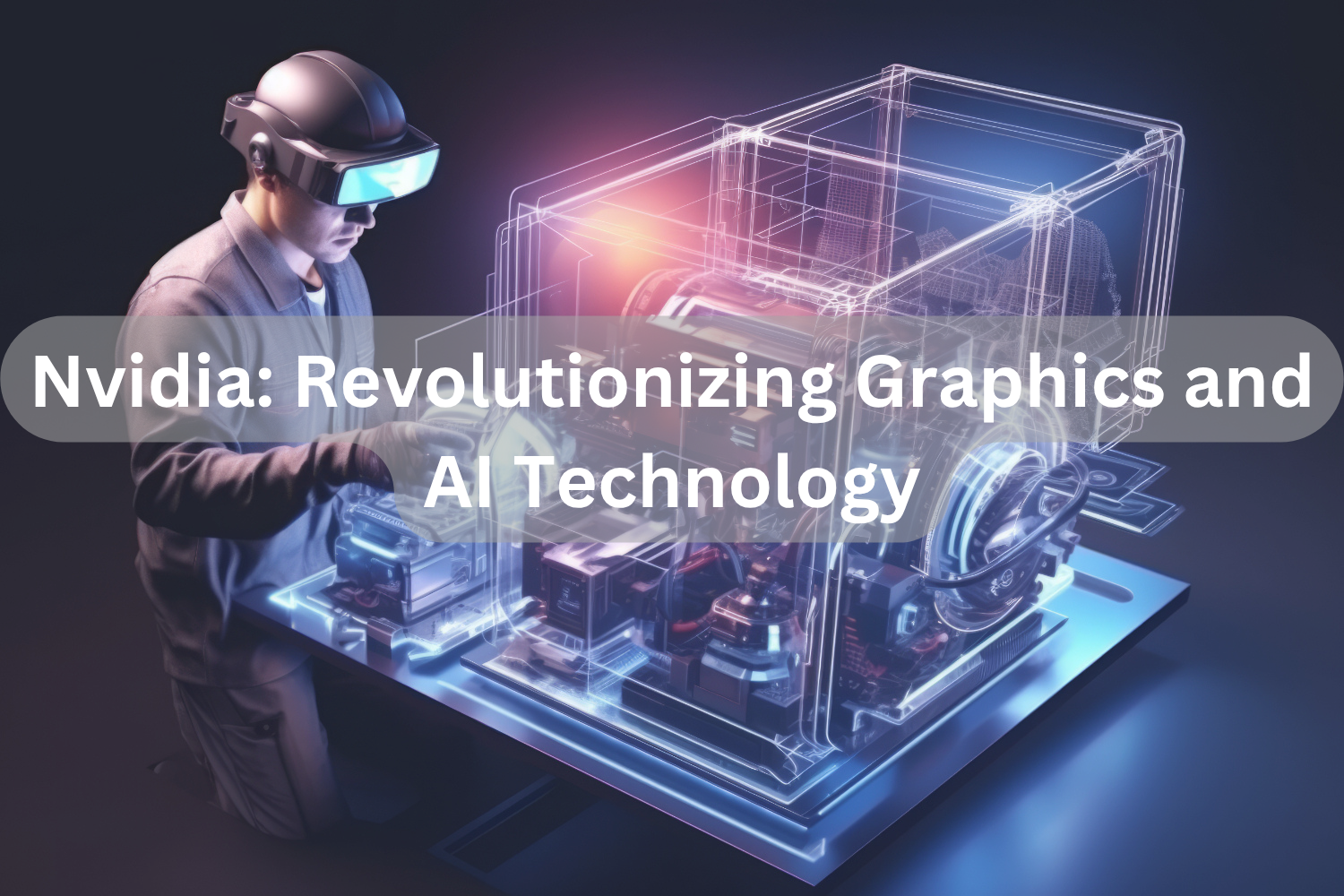Introduction
Few corporations in the world of tech have influenced things as deeply as Nvidia. We’re familiar with Nvidia mainly due to its cutting edge graphics cards and gaming hardware but Nvidia seems to have evolved into a goliath in the business of artificial intelligence (AI) and deep learning. Nvidia, which plays a key role in both the gaming and tech industries, has been an innovator as we consider the future of graphics, AI, and the future of computing. So why does Nvidia stand out? We’ll now look deeper into the company’s innovations as well which have ultimately steered the direction of technology that we know today.
The Evolution of Nvidia
Founded in 1993 with Jensen Huang, Chris Malachowsky, and Curtis Priem, Nvidia aims to develop high performance Graphics Processing units (GPUs). Born as a service project, Nvidia has grown exponentially to become one of the most valuable companies in the tech space, creating critical gaming hardware, professional visualization, and most recently AI technology.
In 1999 the company initially managed to break through with the release of the GeForce 256 GPU, the first true GPU, designed specifically for 3D graphics. This product led the way to realistic rendering and inaugurated a change in how gaming was perceived.
Nvidia’s Breakthrough in Graphics Technology
Nvidia pretty much set the standard when it comes to graphics. Nvidia’s making graphics technology trends in early 2000’s, with its GeForce 8800 GTX putting it top of the heap. Backed by DirectX 10 and advanced shading capabilities, it was an excellent change for gamers and developers alike.
However, true revolution reached in development of Ray Tracing and Deep Learning Super Sampling (DLSS) Technologies. Photorealistic lighting and shadow effects through Ray Tracing have brought video game graphics to basically indistinguishable from real life. On the other hand, DLSS uses AI to swiftly upscale lower resolution images in real time in order to increase performance while still preserving the beauty of a game.
The Power of GPUs: More Than Just Gaming
Nvidia was founded with a focus on gaming, but its GPUs have long since exceeded that market focus. Today, Nvidia’s GPUs are critical components for anything that isn’t just gaming, but AI and machine learning in particular.
GPUs have a parallel computing power which enables them to do complex calculations much faster than regular CPUs. Nvidia’s GPUs, like the ones from P100 andV100 are crucial for AI, where you can train large neural networks and run deep learning models. Nvidias GPUs are enabling progress in healthcare, autonomous vehicles or scientific research — pushing the boundaries of what’s possible in AI.
Nvidia’s Impact on Artificial Intelligence
The rise of AI wouldn’t have happened without Nvidia’s contribution, since the company provided hardware that works as an accelerator for the machine learning tasks. And its GPUs are broadly used for training machines with AI models, be it natural language processing or image recognition. As a leader in property technology, we have pushed adopting the infrastructure that facilitates exponential AI growth and helps industries worldwide to leverage the capability of AI for enhanced insight, automation, and innovation.
Nvidia has made available an ecosystem for researchers to build, train and deploy AI models more efficiently with its platform known as Nvidia DGX, which is intended for AI workloads.
The Rise of Nvidia CUDA Technology
In my opinion one of their most innovative things have been Nvidia CUDA (Compute Unified Device Architecture) technology. Nvidia CUDA gives developers the power to harness the parallel computing abilities of Nvidia GPUs for a broad variety of computational tasks. CUDA has been the go to solution for high performance computing and scientific research due to its simple programming model.
CUDA provided the breakthrough for Nvidia to overcome the limitations of traditional CPU based computing and offer scientists the chance to deal with tasks such as simulation, video rendering and data analysis much more efficiently. The biggest benefit here is for AI research, where you require to process massive datasets in a short time.
Nvidia’s Role in Autonomous Vehicles
In the area of autonomous vehicles, Nvidia’s technology is one of the most exciting of its applications. To process the sheer amount of data collected by their sensors and cameras, self driving cars need nearly incalculable amounts of computational power. In response to this, Nvidia has provided such a need with its Drive platform, a complete solution for autonomous vehicles.
Nvidia’s Drive platform can integrate AI models with high performance GPUs and cars can navigate, decide, and learn in real time. Major automotive companies are already using this technology to speed development of autonomous driving systems.
Nvidia in the Gaming Industry
Nvidia still a game changer for gaming and the larger industry. Nvidia’s graphics cards were always the gold standard for gaming performance since the introduction of the GeForce GTX 1080 Ti to the groundbreaking RTX 3000 Series.
Naturally, Nvidia has been leading the pack when it comes to real time ray tracing and AI tech like DLSS, giving gamers access to a degree of visual fidelity and smoothness to the game they’ve never had before. In addition, Nvidia partners with game developers so games can take advantage of their hardware and guarantee a smooth gaming experience.
The Future of Graphics: RTX and Beyond
Nvidia is driving the envelope yet further with its RTX 4000 Series GPUs, which bring even more power, efficiency and visual fidelity to gaming and professional visualization. As we further develop AI driven technologies like deep learning and neural networks; we will continue to see this have an influence on how games and graphics are rendered in the future.
Nvidia’s Strategic Acquisitions
Over the yeas, Nvidia has struck a few strategic acquisitions in a bid to further its capabilities. It also tried to buy ARM, a company well known for its chip design technology. But on the other hand, this would have allowed Nvidia expand into the mobile and IoT sectors. Although the deal was stopped in its tracks, it shows where Nvidia and its parent company believe computing will be in the future.
Mellanox Technologies is another significant acquisition, which aided the Nvidia data center business as well as offered networking solutions that pair well with graphics processing units Nvidia provides.
Nvidia’s Dominance in the AI Hardware Market
Nvidia is one of the undisputed leaders in the world of AI hardware. Nvidia, however, has an unparalleled dominance in AI and machine learning; and while Intel and AMD also produce GPUs, the company is the one to reach for for everything else. AI researchers, data scientists, and cloud service providers all prefer Nvidia’s hardware because it can manage complex workloads with ease.
Nvidia and Cloud Computing
Yet another area where Nvidia is making a big impact is in cloud computing. Nvidia is working with major cloud providers such as Amazon Web Services (AWS) and Microsoft Azure to allow businesses to remote access the power of the GPU to run AI models, simulations and renderings in the cloud. This has democratized high performance computing, meaning that smaller companies and startups can now take advantage of Nvidia’s high performance hardware without resorting to massive investments in technical infrastructure.
Sustainability and Nvidia’s Green Technology Initiatives
Nvidia is one company making its products more sustainable as pressure grows on the tech industry to shrink its environmental footprint. The company reduces the amount of energy consumed by its products, and make sure that its manufacturing is friendly to the environment. In practice, data centers can use Nvidia’s GPUs, which are energy efficient for Nvidia’s part, to reduce the power consumed by the data centers as a whole.
Challenges Ahead for Nvidia
While Nvidia succeeded, it faces some challenges. This means that Nvidia has to keep innovating and if they don’t, increasingly competition from AMD and Intel will force them out of the market very quickly. In addition, the worldwide semiconductor shortage has caused delays in production timelines, which may interfere with startup dates in production for Nvidia’s product.
Conclusion
Ohh yeah, Nvidia can’t be underestimated in the tech world. Over the past decades, Nvidia has been a true leader in innovation, from revolutionising card graphics technology to powering the AI models of tomorrow. Because as the company continues to evolve we can only wonder what other groundbreaking technology they will unveil.
Frequently Asked Questions
Q: What is Nvidia best known for?
A: Nvidia is primarily known for its graphics processing units (GPUs), which are widely used in gaming, AI, and professional visualization.
Q: How does Nvidia contribute to AI?
A: Nvidia provides high-performance GPUs that accelerate AI training and research, making it easier to process large datasets and build complex AI models.
Q: What is CUDA technology?
A: CUDA (Compute Unified Device Architecture) is a programming model developed by Nvidia that allows developers to use Nvidia GPUs for parallel computing, accelerating a variety of tasks.
Q: What role does Nvidia play in autonomous vehicles?
A: Nvidia’s GPUs and AI technology are used in autonomous vehicles to process data from sensors and cameras, enabling self-driving cars to navigate and make decisions in real-time.
Q: What is the future of Nvidia’s graphics technology?
A: Nvidia’s future in graphics technology looks promising, with new innovations in real-time ray tracing, AI-driven rendering, and powerful GPUs like the RTX 4000 Series.





